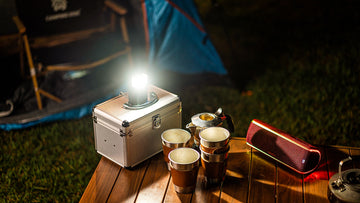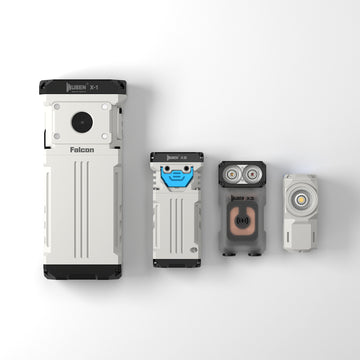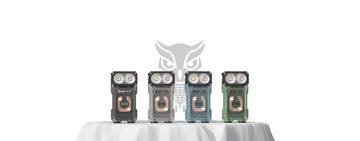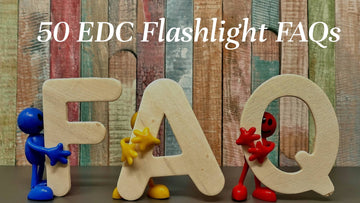
A typical 40-watt incandescent bulb produces around 450-800 lumens of brightness. So, 700 lumens can be roughly equivalent to the brightness of a 40-watt incandescent bulb.
When it comes to picking out lights, you gotta understand the brightness game. Lumens are the real deal when it comes to measuring how bright a light source is. Knowing what 700 lumens is all about helps us make smart choices for different settings.
Lumens give us the lowdown on the total visible light coming from a source. Forget about wattage and its power consumption talk, lumens are where it's at for brightness accuracy. To wrap your head around 700 lumens, let's check out some everyday examples.
Take your average smartphone flashlight, it pumps out around 20 to 100 lumens. That's enough brightness for close-range stuff or finding your lost keys in the dark. But 700 lumens? Now we're talking serious brightness. It'll light up a bigger area with some major intensity.
Now, to really get a grip on 700 lumens, let's compare it to other gadgets and see how it holds up in the real world. Depending on the lighting setup, 700 lumens falls into the moderately bright category.
For example, a typical 60-watt incandescent bulb, the kind you find in homes, dishes out about 800 lumens. So, 700 lumens brings you a similar level of brightness. Perfect for reading, working, or just lighting up the room. And LED bulbs? They can hit 700 lumens while sippin' on way less wattage, keeping things energy-efficient.
Now, where can you use those 700 lumens in your crib or office? Picture a desk lamp with a 700-lumen bulb. It's got your back for focused tasks like studying or computer work. In your living room or bedroom, a ceiling fixture pumpin' out 700 lumens sets a cozy mood or serves as general lighting.
But remember, lumens ain't the whole story. Other factors can change how bright a light appears to your peepers.
The lighting environment is a big player in the brightness game. In a well-lit room with shiny surfaces, 700 lumens will seem brighter than in a dim space with dark walls. And don't forget about natural light. Sunbeams streaming through your windows impact the overall brightness vibe.
The type of bulb and its color temperature can also mess with your brightness perception. LED bulbs are known to bring more oomph compared to old-school incandescent bulbs with the same lumen rating. And check this out, bulbs with higher color temperatures like daylight white give off a brighter illusion compared to warmer tones like soft white or warm white.
So, with 700 lumens being moderately bright, it's got your back for all kinds of lighting needs at home or work. Just remember to think about the lighting environment and the bulb's characteristics, like type and color temperature, before you make a move. That way, you'll create spaces that are well-lit and easy on the eyes. So, next time someone throws "700 lumens" your way, you'll know exactly what kind of brightness it's packin', making you a lighting decision master.
Related article: How Bright is 1000 Lumens
When it comes to picking out lights, you gotta understand the brightness game. Lumens are the real deal when it comes to measuring how bright a light source is. Knowing what 700 lumens is all about helps us make smart choices for different settings.
Get an instant 15% discount now!
The Lightok X3 Owl is the best EDC flashlight, boasting an impressive 700 lumens of brightness.
Take your average smartphone flashlight, it pumps out around 20 to 100 lumens. That's enough brightness for close-range stuff or finding your lost keys in the dark. But 700 lumens? Now we're talking serious brightness. It'll light up a bigger area with some major intensity.
Now, to really get a grip on 700 lumens, let's compare it to other gadgets and see how it holds up in the real world. Depending on the lighting setup, 700 lumens falls into the moderately bright category.
For example, a typical 60-watt incandescent bulb, the kind you find in homes, dishes out about 800 lumens. So, 700 lumens brings you a similar level of brightness. Perfect for reading, working, or just lighting up the room. And LED bulbs? They can hit 700 lumens while sippin' on way less wattage, keeping things energy-efficient.
Now, where can you use those 700 lumens in your crib or office? Picture a desk lamp with a 700-lumen bulb. It's got your back for focused tasks like studying or computer work. In your living room or bedroom, a ceiling fixture pumpin' out 700 lumens sets a cozy mood or serves as general lighting.
But remember, lumens ain't the whole story. Other factors can change how bright a light appears to your peepers.
The lighting environment is a big player in the brightness game. In a well-lit room with shiny surfaces, 700 lumens will seem brighter than in a dim space with dark walls. And don't forget about natural light. Sunbeams streaming through your windows impact the overall brightness vibe.
The type of bulb and its color temperature can also mess with your brightness perception. LED bulbs are known to bring more oomph compared to old-school incandescent bulbs with the same lumen rating. And check this out, bulbs with higher color temperatures like daylight white give off a brighter illusion compared to warmer tones like soft white or warm white.
So, with 700 lumens being moderately bright, it's got your back for all kinds of lighting needs at home or work. Just remember to think about the lighting environment and the bulb's characteristics, like type and color temperature, before you make a move. That way, you'll create spaces that are well-lit and easy on the eyes. So, next time someone throws "700 lumens" your way, you'll know exactly what kind of brightness it's packin', making you a lighting decision master.
Related article: How Bright is 1000 Lumens
Related Articles




